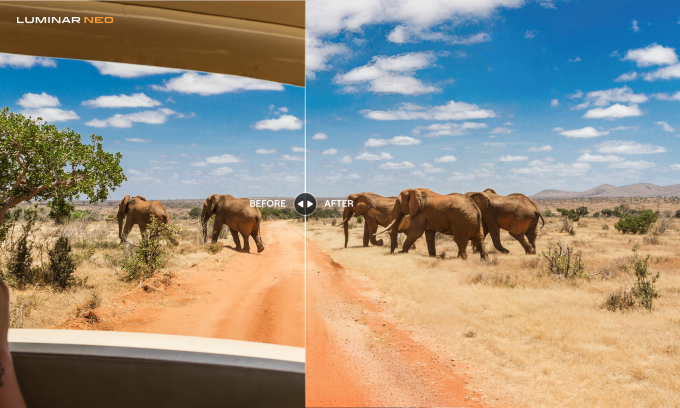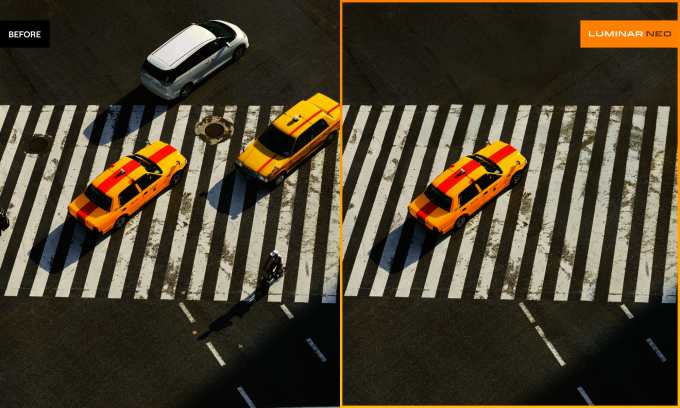Luminar Neo is revolutionizing the photography world, making generative AI tools accessible not just to professionals but to everyone. While industry giants like Adobe have primarily catered to the pros, Skylum’s Luminar Neo ensures that even hobbyists can tap into the transformative power of AI in their photo editing endeavors.
This shift is a testament to the democratiza
➜ The New Wave of Photo Editing: Generative AI
Generative AI, a technology making waves in the professional photography sphere, is now accessible to a broader audience. Luminar Neo’s recent rollout introduces generative AI features to its desktop applications for both Mac and Windows. These features empower users to effortlessly remove unwanted objects, expand their canvas, or add specific elements to their photos.
➜ Luminar Neo vs. Adobe’s Generative Fill
While both tools aim to enhance the photo-editing experience, notable differences exist. Luminar Neo’s GenErase and GenSwap tools stand out for their simplicity. Unlike Adobe’s Generative Fill, which offers multiple result options, Luminar Neo’s tool provides a straightforward approach. If users wish to see a different outcome, they must click the “Erase” button again.
➜ Skylum’s Evolution Over the Years
Skylum’s journey has been marked by innovation and adaptability. After the success of their iOS apps, they ventured into the Mac app world, introducing FX Photo Studio Pro in 2010. This app alone garnered over 50 million downloads. Their commitment to photography led them to launch other image-editing apps like Snapheal, Intensify, Tonality, Noiseless, and Aurora HDR. Recognizing the potential of consolidating their offerings, they merged several apps to create the Creative Kit. The birth of Luminar in 2016 marked a significant milestone, and by 2018, the team’s focus shifted entirely to this project.
➜ The Vision Behind Luminar Neo
Luminar’s primary goal was to simplify photo editing for desktop users. While the 2022 version, Luminar Neo, primarily targets hobbyist photographers, it hasn’t gone unnoticed by professionals. Some commercial photographers use Luminar Neo as a supplementary tool, integrating it as a plug-in for renowned software like Lightroom or Photoshop.
➜ The Future of Luminar Neo’s Generative AI Tools
Skylum has an ambitious roadmap for Luminar Neo. They plan to introduce a new generative AI tool every month until the end of 2023. GenErase debuted on October 26, with GenSwap and GenExpand set to launch on November 16 and December 14, respectively. These tools, while based on the same foundational technology, offer varied results by tweaking parameters, ensuring a wide range of applications for users.
➜ The Technology Powering Luminar Neo
Skylum’s generative models are rooted in Stable Diffusion. However, they’ve integrated their proprietary Upscale AI model and other technologies into a cohesive pipeline. This approach enhances the resolution and quality of the images generated. Currently, Luminar Neo offers a resolution of up to 1536×1536, outpacing Photoshop’s 1024×1024.
➜ Privacy and User Experience
Skylum prioritizes user privacy. Even though image processing occurs in the cloud, the company ensures they don’t store any images, whether input or output. This commitment to privacy, combined with the software’s power and ease of use, sets Luminar Neo apart in the market.
➜ Insights from Skylum’s CEO
In an email interview with TechCrunch, Ivan Kutanin, the Ukraine-based CEO of Skylum, shed light on the company’s direction:
“All three generative features that will be released this year are based on the same technology, but combining and changing the parameters gives us different results and covers different use cases for the end user, which is why we decided to have three separate features,”
Kutanin also emphasized the company’s commitment to quality, mentioning their use of Stable Diffusion and their proprietary Upscale AI model. This combination allows Luminar Neo to offer superior image resolution compared to competitors.
Luminar Neo’s move to democratize generative AI in photo editing is a game-changer. As AI revolutionizes various industries, it’s refreshing to see tools like Luminar Neo ensuring that advancements aren’t reserved just for professionals. For those interested in the intersection of AI and photography, NeuralWit offers more insights into the evolving landscape.




